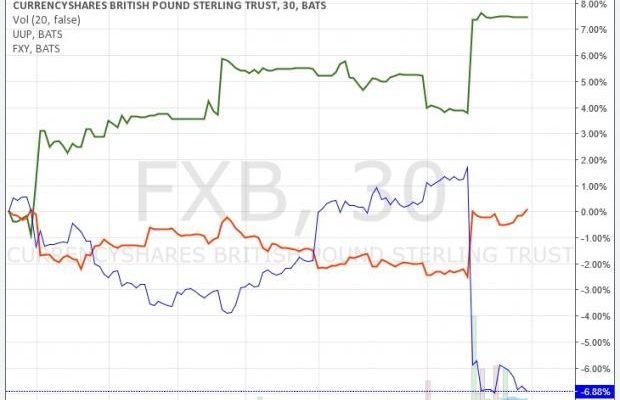June 23, 2016 will be long-remembered in the European financial history as Britain parted ways with the European Union (EU) by a referendum. With the consequences of this event expected to be mostly negative on the British economy, going by several analysts’ views, Britain’s currency pound fell prey to the event along with several other risky assets.
The currency fell to a 31-year low due to Brexit, forcing the pound ETFÂ CurrencyShares British Pound Sterling ETF (FXBÂ -Â ETF report) to shed 8.4% on June 24, 2016. The fund hit an all-time low on the day and is on its way southward, having lost about 2.6% in the pre-market session of June 27, 2016.
Chances of U.K. slipping into a recession are higher ahead due to weaker terms of trade and a likely flight of investments on uncertain economic policies. The likes of Goldman Sachs has forecast that the U.K. economy will likely see a “mild recession” by early 2017. Investors should note that the possibility of a slowdown in the economy may lead Bank of England to cut interest rates, leaving no scope for pound outperformance or stabilization in the near term.
Definitely, the pound ETF is not a Buy at the current level. But investors having a strong stomach for risk may tap it with a long-term view. After all, all the downside movement in the fund will be capped in fast, in fact over the next few sessions, as investors are hurrying to price in the looming risk in pound. With this, the currency and the related fund may bottom out soon and give way to a reversal.

We had issued the following article way back in 2013 based on then relevant facts and figures:
British Pound ETF: Time to Buy?
It has been a rather forgetful year for the British pound so far as the currency lost close to 6.5% versus the U.S dollar since the start of January. This makes it one of the worst performing currencies on a year to date basis after the Japanese yen (read DXJ–Best ETF to Play the Japan Rally).

